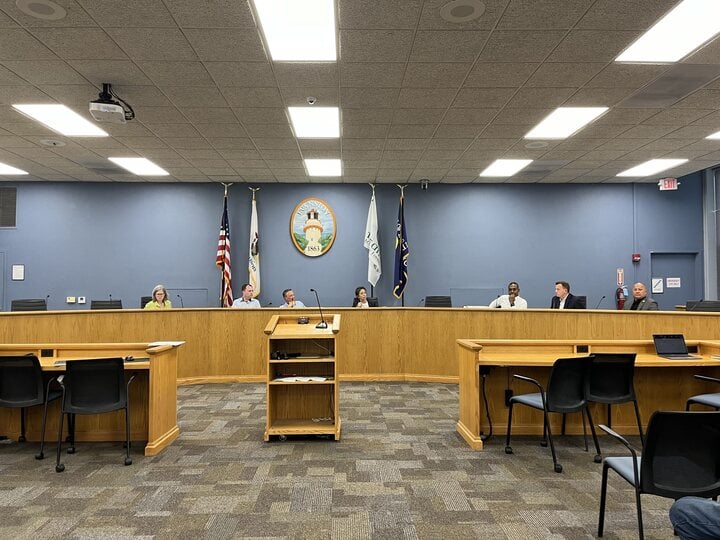Call it a hit: with major magazine attention and laudatory internet discourse, Communication sophomore Makena Carnahan’s debut project “Call It a Home” resonated with audiences through genuine lyricism and endearing instrumentals.
Carnahan — who goes by Makena lei professionally — sat down with The Daily to speak about her inspirations, recording process and themes present on her first LP.
Carnahan began to conceptualize “Call It a Home” about a year ago. She had been writing a lot of songs and felt like the time had come to create something cohesive out of them, she said.
An important moment in the creation of the album came when she met Northwestern graduate Jamie Eder (Weinberg ’23). The two met after Eder responded to a flier Carnahan had hung up on campus, calling any collaborators who love indie band Big Thief.
Carnahan and Eder have since formed “a sort of band,” she said. Two of the songs they wrote together at the beginning of this past summer — “Semi” and “Hiding From Nothing” — appear on the album.
“When we’re writing together, we pass it back and forth,” Carnahan said. “We don’t sit in a room and go, ‘Okay three… two… one, let’s write a song.’ One of us will have an idea, and then we’ll send it to the other in a voice memo, and then we’ll just send it back.”
Despite their spontaneous writing process, there aren’t parts of the songs that are distinguishable as belonging to either writer, Carnahan said.
Instead, she said, Eder and herself form a joint “creative consciousness.”
“When you’re collaborating with someone else like that, the song just filters through both of you so many times,” Carnahan said. “It kind of creates this third voice in a way, which is why I like writing with other people.”
As far as musical inspirations for “Call It a Home,” Carnahan wants to be upfront with listeners.
“A lot of Big Thief is running through my ears all the time,” she said. “I’ll be honest, a lot of Phoebe Bridgers. Why lie, you know?”
Carnahan highly praised the pen of Big Thief’s Adrianne Lenker, saying she would “die happy” if she could write songs like Lenker.
Out of all of the tracks on the album, the recording process for the last song, “See-Through,” stuck out to Carnahan. The song changed frequently and almost ended up as three different songs, she said.
“We all started playing around with different things in the room … I was taking photos in the studio, and I was like, this sound is so sick,” Carnahan said. “So there’s photos of me recording the side of my camera clicking into a mic, and that’s in the song.”
Communication sophomore Gavin Yi, who is a close personal friend of Carnahan, said he truly enjoyed the album.
“I love it, and not just because she’s one of my best friends, but because it’s genuinely a really good album,” Yi said. “I really enjoy the lyrics… every song creates its own picture.”
Yi’s favorite song off the album is the opening track, “Cowboy Music.”
Although he listens to a wide range of music, the song is his most streamed in the past six weeks, he said.
“I just remember the first time I heard it and it came out as a single — I listened to it on repeat for like two days straight,” he said. “Something about it just really resonated with me, and I couldn’t stop listening to it.”
The album cover is meaningful to Carnahan, not only because of the feel of the project but also due to the emotions it explores.
The cover features a photo of her mother. Carnahan attributes this choice to how much closer she and her mother have grown together of late.
“A lot of us getting closer had to do with me working through stuff in my relationship with my dad, so I like that she’s on there,” Carnahan said. “She’s also a very creative person and a big inspiration of mine.”
Listeners can go see Makena lei perform at The Atlantic on Jan. 26, and Gallery Cabaret on Feb. 9.
While the release of “Call It a Home” has been the culmination of months of creative exploration, Carnahan has no plans of slowing down.
Carnahan and Eder are practicing frequently, she said.
“Jamie and I are working on recording some stuff, so we’ll see what happens,” Carnahan said. “More to come at some point.”
Email: [email protected]
Twitter: @JacksonWeier
Related Stories:
— Liner Notes: The best albums of 2020
— Slaughter Beach, Dog had Thalia Hall ‘Crying, Laughing, Waving, Smiling’
— Jeremy Zucker woos fans with emotional, vulnerable ballads in Vic Theatre



















